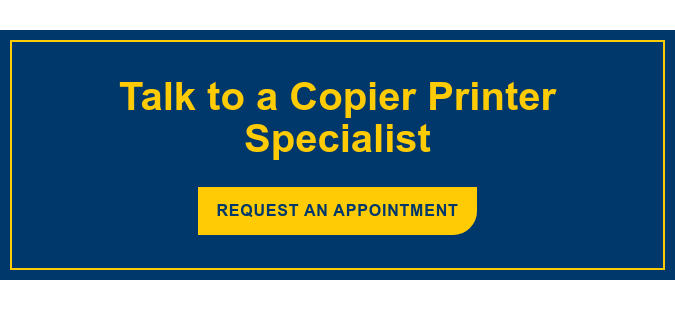 One of the most universal pieces of equipment in offices is the copy machine. Every day employees’ hustle and bustle through the office, making copies, running large print jobs and taking all of it for granted. How many of those employees understand how a copy machine works? Odds are, the vast majority simply come and go without any real understanding of the copying process. But, that is the beauty of technology – we don’t need to know how it works in order to make it work for our uses.
One of the most universal pieces of equipment in offices is the copy machine. Every day employees’ hustle and bustle through the office, making copies, running large print jobs and taking all of it for granted. How many of those employees understand how a copy machine works? Odds are, the vast majority simply come and go without any real understanding of the copying process. But, that is the beauty of technology – we don’t need to know how it works in order to make it work for our uses.
Sometimes, though, it is intriguing to learn, or just take a minute to appreciate, how these technologies work. The copy machine, or photocopier, is as important to any business as the computers and office furniture that are used by employees each and every day. So what happens inside that machine once you push the start button?
Basics of the Copying Process
The basic performance of a copy machine relies upon the principle that opposite charges attract. Under the lid and behind the glass that you see on your copy machine there is a special drum that creates a form of static electricity. This drum works in union with a toner cartridge. That toner cartridge contains a fine black powder; when the drum collects a charge it attracts the toner particles, allowing it to reproduce an image on a blank piece of paper.
Three Important Factors in the Copying Process
Every copy machine relies upon three important factors that aid in the process of making copies. First, the drum inside the copy machine can be selectively charged. This allows only parts of the drum to attract the toner. When you push the start button, a copied image is made in static electricity on the surface of the drum.
This is the key factor in learning how a copy machine works. Any space on your original sheet of paper that is black is where static electricity will be generated on the drum, attracting the toner, and recreating the image from your original piece of paper. All of the white spaces on your original piece of paper do not attract toner.
Now, toner needs to be transferred from the drum to a blank sheet of paper. The same static electricity that attracts toner to the drum then pulses static electricity through the paper. That static electricity allows the piece of paper to pull the toner off the drum and onto the blank sheet (copying words from the drum to your paper). Toner is heat sensitive, so the toner fuses to the paper with heat as it comes off the drum. Viola! Your documents have just been copied.
Physical Components
A copy machine actually contains a wide variety of physical components inside that would leave your head spinning if you took it apart. The following pieces are a few important components:
- Photoreceptor drum
- Corona wires
- Lamp and lenses
- Toner
- Fuser
The drum, as mentioned earlier, is the heart of any photocopier. Corona wires are critical in creating the positive charges that need to be generated on the drum and paper. The corona wires are exposed to high voltage to create the static electric charge.
Lamps and lenses play their part early in the copy process. When the copier is turned on, the lamp inside moves across the copy machine and illuminates the piece of paper to be copied, one strip at a time. Mirrors attached to the lamp direct light through a lens and onto the drum below, transferring your original image onto the drum. The lamp provides a light source and energy to the process, while the lens allows you to focus a copy image on specific sections.
The final piece of the puzzle is the fuser. A fuser first melts and presses the toner image from drum to paper, and then prevents the melted toner from sticking to the drum or other parts.
Photocopy machines are critical to the everyday operation in any office. Knowing how it works is not only interesting – a fun fact you can impress your friends with at your next cocktail party (just kidding) - but it can also help you to identify issues or malfunctions if things go wrong. Plus, the next time you are frustrated with the speed of your copy job, you can recall how much is going on inside the machine.
